
A campaign to prevent visitors climbing on wet rock in the popular bouldering hotspot of Fontainebleau, France has been shared on social media following incidents of poor practice over the busy Easter period. UKC has also received reports of people climbing on the delicate sandstone in the rain or while the rock is still damp.
Sandstone is a porous rock type and moisture renders it extremely fragile when force is applied by a climber's hands or feet. Holds can break suddenly and layers of rock erode more quickly if climbed when wet, or with damp and/or sandy shoes.
One climber who recently visited the forest, told UKC:
'Sadly, lots of people were climbing on wet rock after it had showered or rained heavily. Some people seemed oblivious to the damage it could cause, but some more experienced climbers from all nationalities were still climbing. There were several reports of broken holds and damage to the rock.
'I think if new climbers were better informed, some wouldn't have climbed on the wet rock. Unfortunately, some more experienced climbers still seemed more focused on climbing their projects than protecting the rock.'
The Instagram campaign launched by the Women's Bouldering Festival and Fontainebleau Boulder accounts stated:
'We've already received reports of holds broken on the classic circuits of Isatis this week because people care more about their enjoyment than about preserving Fontainebleau climbing.'
'If you love Fontainebleau enough to come from far away for the climbing, you should love it enough not to climb when the rock is wet.'
Over the years, many classic problems in the area have been ruined by careless climbing in unsuitable conditions, or significantly changed.
How to respect the rock
These guidelines apply not only to Fontainebleau, but to all climbing areas.
Some rock types dry quicker than others. Generally speaking, porous rock such as sandstone and gritstone will take longer to be climbable after rainy spells than limestone or other types, and are more friable.
If the weather has been wet recently and/or if it's still raining, check the rock for wetness/dampness before you commit to climbing. If it's not completely dry, take a rest day—no matter how little time you have on a trip. Two days of dry weather for porous rock is a good rule of thumb, but depending on wind/sun exposure, some areas (such as dank caves or north-facing areas) may take longer to dry.
Before stepping onto the rock, and especially if the ground is wet, be sure to clean and dry your shoes using a towel to minimise damage. Even dry sand/debris can erode rock under the pressure of climbing shoes.
If you're in Fontainebleau and it's too soggy, be patient, take a rest day or two and visit one of the excellent indoor climbing facilities in the area (or go to the Château de Fontainebleau for some culture). The friction is awful when it's wet, anyway...
Read this guide on how to tell if rock is dry enough to climb by Betty Bleau.
Watch these UKC videos on Fontainebleau ethics:
Read our UKC Respect the Rock series.



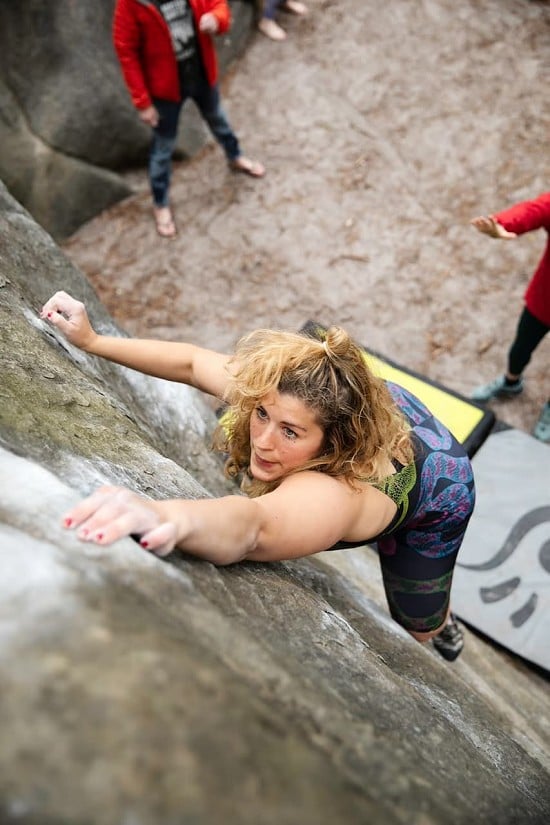






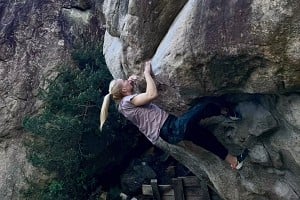
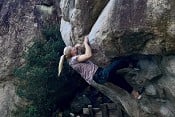
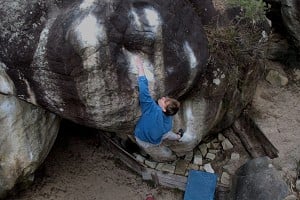
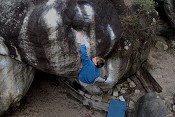


Comments
It's quite unpleasant to climb on wet sandstone anyway and I can imagine some of the font top-outs go from sketchy to properly dangerous when wet. Also agree there is absolutely no possible reason not to have wiped every grain of sand off shoes before starting up a problem. But does it really take 2 days to dry out after rain?! I've generally found the rock "seems" dry after a few hours, less in the areas more exposed to the wind. Have I been damaging it all these years? :-(
Looking at the rainfall history for Fontainebleau for 2023, it suggests that the only day anyone should have climbed all of last spring was 4th & 5th May. Every other day had at least one light shower in the preceding 2 days...
It’s certainly the case on southern sandstone that the rock absorbs rain like a sponge. The outer layer can dry in a breeze but underneath is very weak due to it being wet…
Massive congrats to those people trying to protect the rock for future generations. We have a lot of vulnerable sandstones here in the NW. It's better to be cautious than cavalier, the rock is finite and doesn't grow back.
Re: dry days, one of my favourite problems at Helsby lost a critical hold. I know the guy that did it - not an idiot - and he came clean and was mortified. The rock *looked* dry, it was a sunny day even ...but just the skin was dry.
This is a good article, as well as the one linked in the intro:
https://bettybeta.com/articles/how-to-tell-if-a-hold-is-wet
And the 'boolder' app has a useful list of 'quick drying sectors'.
There seems to be a bit of a mob mentality in font when it's damp. Loads of people turn up to a 'quick drying crag' to have a look, which is fair enough, but as soon as one group start climbing others will quickly follow suit rather than using their own judgement.
You just have to look at what's going on in Northumberland right now to realise that people don't care about the rock. They are climbing on fragile sandstone crags that are literally dripping wet. If they've travelled to climb, they're going to climb no matter what. They don't care about the damage they cause. It's absolutely shocking.